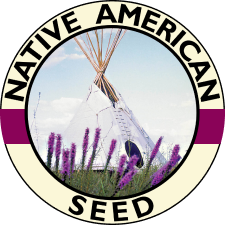This unique plant is a botanical enigma. The leaves look like yucca, and the flowers appear to be from an alien planet. Its actually a member of the Parsley Family. The distinctive, waxy-green foliage lends the plant a bit of an unusual air, and the white "spiky golf ball" flowers that show up in July are truly unique. Makes an excellent specimen, planted individually or in groups of three. Native Americans brewed a tea of the root as an antidote to rattlesnake venom. Photos by Carolyn Fannon
The Natives are Friendly
The name alone is enough to grab your interest and like the name suggests there is evidence that both the early Pioneers and Native American Indians used the roots for a medicinal antidote for Rattlesnake bites. Other uses reported by James Adair an 18th –century Indian trader included venereal disease, impotence, expelling worms, and to induce vomiting. He also recounted tales of Native Indians chewing the root of Rattlesnake Master, spitting it on their hands and then handling Rattlesnakes without being bitten (please don’t try this at home!). The dried seed heads of Rattlesnake Master, Eryngium yuccifolium, were used as rattles by the Native American Indian tribes in some of their ceremonies. This native perennial of the tall grass prairie ranges from Minnesota east to Ohio then south to Florida and Texas. At this time of year it is a striking wildflower standing erect in defiance to the blistering summer heat. At first the seed heads have a milky white-grayish cast that then turn to a bluish hue when mature. Its close cousin Eryngo, Eryngium leavenworthii, has a slightly more elongated head and a more striking purple color at maturity. Rattlesnake Master has numerous tiny flowers that consist of 5 white petals, a divided white pistil, and several white stamens with light brown anthers imbedded in a prickly stiff ball about the size of a malted milk ball or a big shooter marble.
Rattlesnake Master blooms from June until September and the flowers have a sweet honey like scent. The scent attracts insects galore. Some of these include; native long-tongued bees, short-tongued bees, wasps, flies, butterflies, skippers, moths, beetles, and for a lack of a better name, a variety of plant bugs. Although not found in Texas, the caterpillars of the rare Papaipema eryngii (Rattlesnake Master Borer Moth) bore into the stems and feed on the pith. Here in Texas, Rattlesnake Master is a host plant for the Swallowtail Butterfly and in particular the Black Swallowtail Butterfly. Rattlesnake Master along with Prairie Parsley is a native variety in the carrot family. The plant itself will grow from 2-5 ft tall on a stiff erect stem that is unbranched except at the top giving it a very unique experience. The leaves wrap around the stem and are long and thin with prickly edges that resemble yuccas hence Rattlesnake Master’s scientific name Eryngium yuccifolium. Eryngium is the Greek meaning for prickly plant and yuccifolium is Greek for yucca leaves. It is definitely a native plant that will add interest to any place it is planted.









